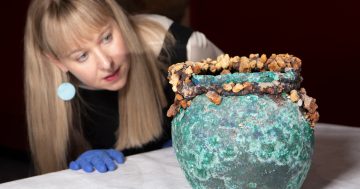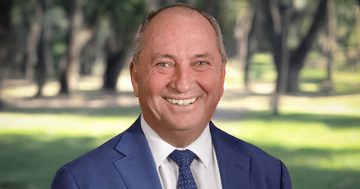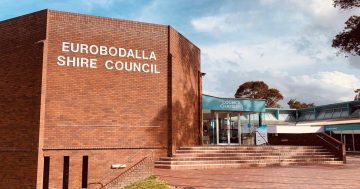
Sheep mill out the front of Old Parliament House (believed to be in the 1940s or 1950s). Photo: MoAD.
Talk of ripping down Old Parliament House began when the designs hit paper.
“The original design referred to it as ‘Provisional Parliament House’, that title alone indicates its tenuous existence,” MoAD interpretation and content manager Dr Kate Armstrong said.
“There was also a moment in its life when there was talk of demolishing the building, as the new Parliament House was being built.
“So it hasn’t always been entirely secure in its existence.”
Dr Armstrong works for the Museum of Australian Democracy (MoAD), housed within the historic Canberra building which celebrated its 95th birthday on 9 May. Celebrations came two weeks after the museum was finally able to reopen.
“I wonder if 9 May was even noticed when it was a functioning parliament building, but we certainly do,” Dr Armstrong said.
“Every year its birthday comes around and indicates its longevity and continuing symbolism of Australian parliament and democracy.”
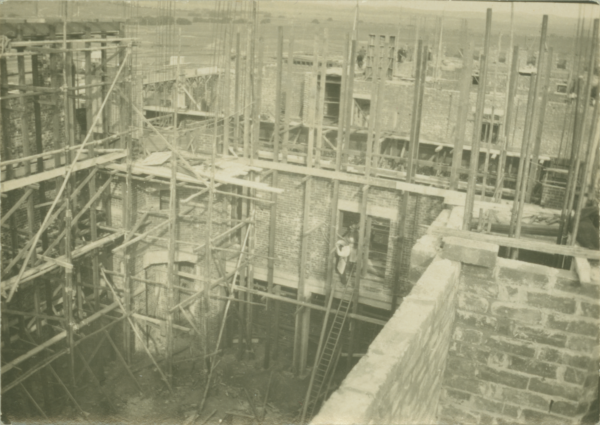
Construction of the old Senate chamber. Photo: MoAD.
The building has marked some historic milestones throughout its 95 years. It witnessed the first women elected to Federal Parliament in 1943, Enid Lyons and Dorothy Tangney; it welcomed Queen Elizabeth II in 1954 on her first royal tour of Australia; and in 1971 Neville Bonner made history when he stepped into the building as Australia’s first Indigenous federal parliamentarian.
But it’s the stories of the people behind the scenes that fascinate Dr Armstrong.
“One thing people are constantly surprised by is the army of staff who worked there and kept it going,” she said.
“Everyone in the building was supported by the extraordinary staff who, in their own way, supplemented the functioning of parliament and Australian democracy.
“There were kitchen staff, printing rooms, secretaries, advisers, members of the press, drivers, a housekeeper, security guards – an army of people who were cogs in the wheel of parliament. I’ve spoken with many of them, and they see their time in Old Parliament House as a very significant and precious part of their careers.”
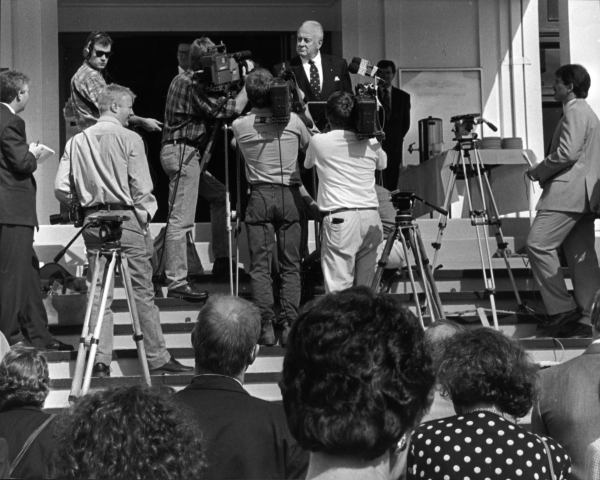
Gough Whitlam’s dismissal speech on the steps of Old Parliament House in 1975. Photo: MoAD.
From when the first sod was turned in 1923 to now, Dr Armstrong said the spirit of the building and what happened there still resonated with the rest of the community.
“I remember when Gough Whitlam died, there were a lot of tributes to him on the front steps,” she said. “I was the one who made sure the flowers stayed looking fresh and I read through every letter.
“Many of the tributes mentioned how government decisions from his day have impacted their lives.
“You could use any example. It could be the decisions by Prime Minister Curtin around troops and defence of World War II, the decision to withdraw troops from Vietnam, being able to go to university fee-free for the first time under Commonwealth scholarships – many people align the building with the decisions that touched their lives.”
The removal of the marriage bar in 1966, which allowed married women to work, and anti-discrimination legislation from the 1980s resonate with Dr Armstrong.
“It’s pretty extraordinary when you think about the level of impact governance has had on our lives,” she said.
“I’m also interested in those people who came after the firsts, after the trailblazers, the story of those people who thought `I could do that too, now’.”
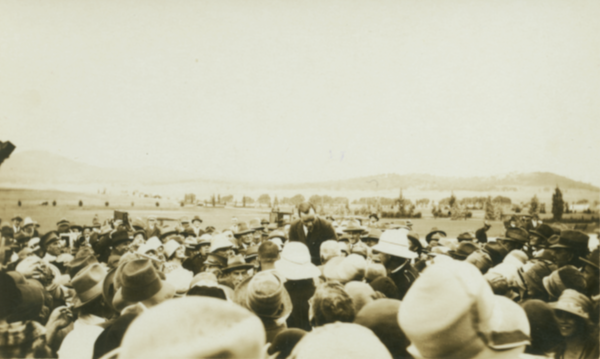
Spectators at the 1927 opening of ‘Provisional Parliament House’. Photo: MoAD.
At the 95th birthday celebration, MoAD director Daryl Karp AM said the museum would continue to capture the stories of our democracy.
“It’s a witness to our history, the good, the bad, it’s continuously moving forward,” she said.
“An Irish friend of mine commented ‘it’s just like Australia to put its democracy in a museum, ours is a living thing’. And that’s what we want to do, we want to make democracy a rich, lived experience.”
She said the heritage-listed building was a place of change and a chance for everyone to consider their place in the governance of Australia.
“The fact it’s a nationally listed heritage building says things about what we value, about what we want to remember,” Ms Karp said.
“It’s not only about where we came from, but also thinking about where we are going.”
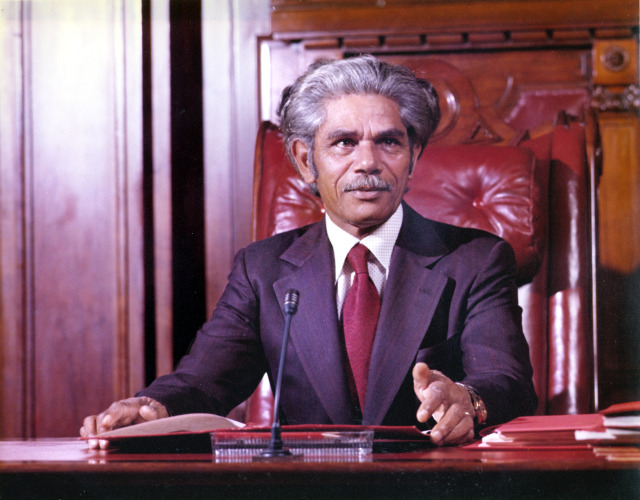
First Indigenous parliamentarian Neville Bonner sits in his Senate chair. Photo: MoAD.
Eyes have already turned to the building’s 100th birthday, which Dr Armstrong predicted would come in the blink of an eye.
“There’s something profound and important about the number 100,” she said.
“But the 300th birthday, now that’s important. I’m in the longevity business, all my actions here are based on conserving the building into the future.
“It’s my privilege to care for this place.”
A more immediate event will recognise Warren Snowden, the last currently serving MP who also served in Old Parliament House. He is not contesting the 2022 Federal Election.
“He began his career in Old Parliament House in the late 80s, the building was vacated in June 1988,” Dr Armstrong said.
“He’s the last to straddle the two buildings.”
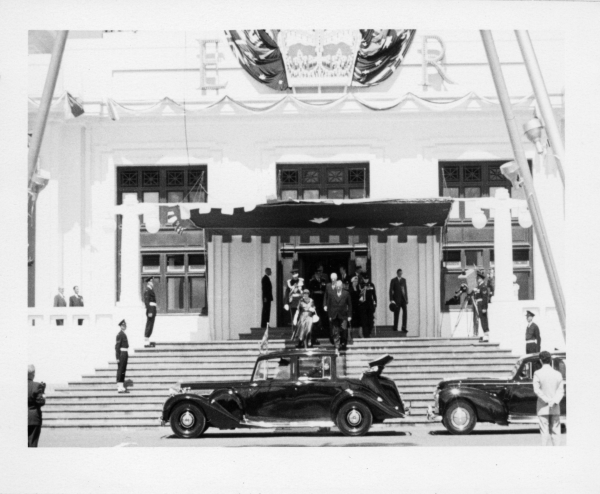
Queen Elizabeth II’s visit in 1954. Photo: MoAD.
Original Article published by Claire Fenwicke on Riotact.









